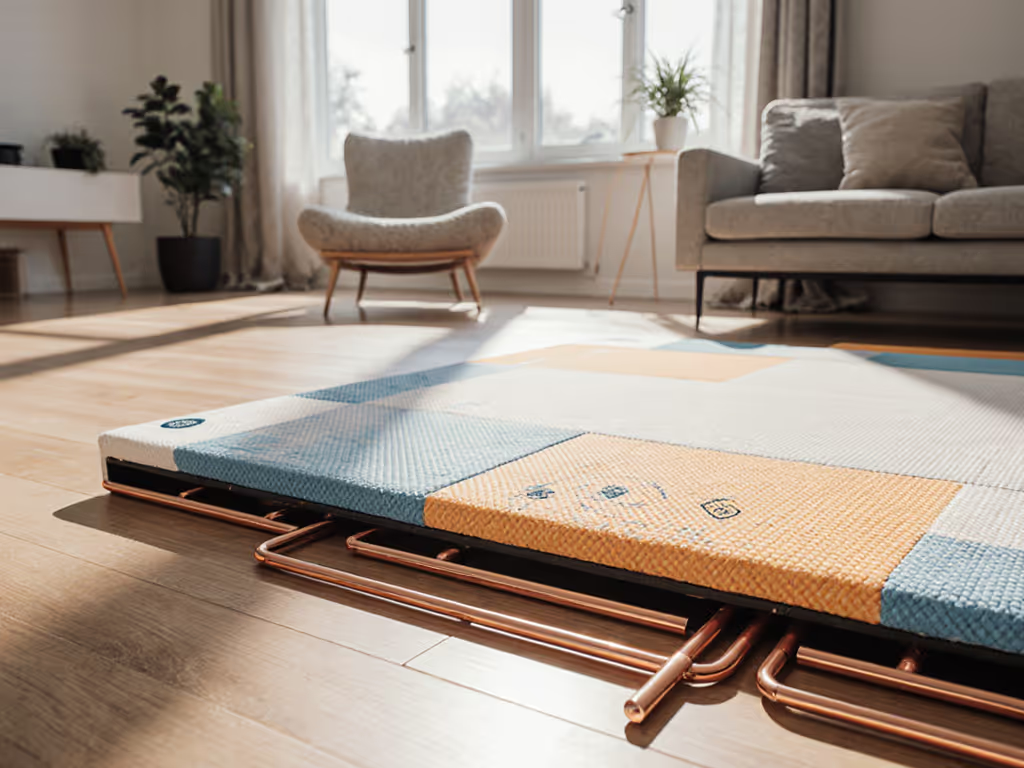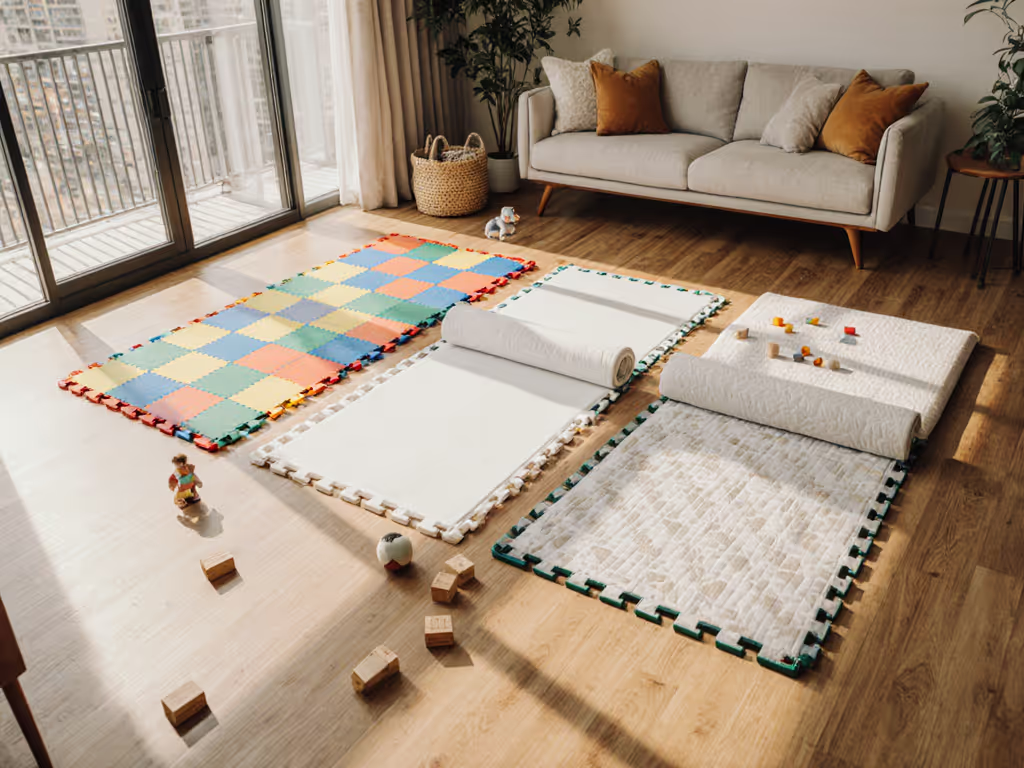
Baby Play Mat Materials: Safety Tested & Rated
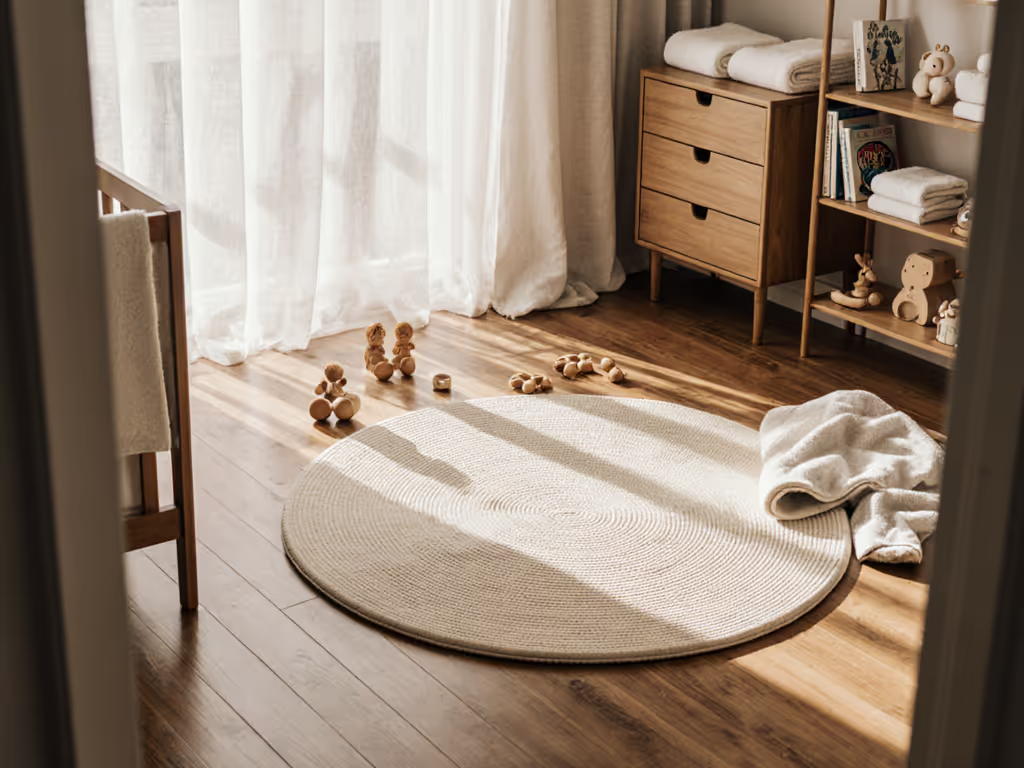
As a parent who reads safety data sheets for fun, I know that finding a truly safe baby play mat with genuinely safe play mat materials requires more than marketing claims. That "new" smell many parents notice isn't just nostalgia; it is often volatile organic compounds (VOCs) off-gassing from materials. When my own nursery had that distinctive "new" scent for days, I began requesting test reports and tracking off-gassing. Transparency is a feature, not a vibe or hint, and families deserve to know what chemicals might be present in products babies spend hours on daily.
FAQ Deep Dive: Understanding Play Mat Materials Safety
What makes EVA foam safe (or not) for baby play mats?
Ethylene-Vinyl Acetate (EVA) foam is the most common material in modern puzzle-style play mats. Unlike older PVC-based mats that contained concerning phthalates, EVA foam safety depends on manufacturing purity and additives. Pure EVA is generally considered low-risk, but impurities can introduce formamide, a potential developmental toxin.
Key facts:
- Formamide can leach from low-quality EVA foam during off-gassing
- EU regulations limit formamide to 200 mg/kg (US allows up to 1,000 mg/kg)
- Independent testing shows significant variation between brands
A recent industry report confirmed that EVA foam produced in regulated facilities with third-party testing typically shows formamide levels well below safety thresholds. When manufacturers voluntarily provide test reports showing formamide levels at "non-detect" or single digits (mg/kg), that's a strong indicator of quality control. Keep in mind: EVA itself isn't inherently toxic, but manufacturing processes determine safety.
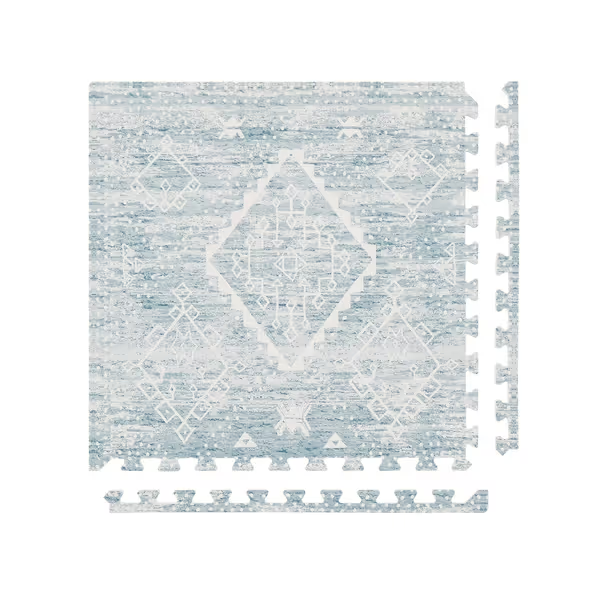
House of Noa Baby Play Mat – 4x6 Indigo Ula
How can I verify if "non-toxic play mats" claims are legitimate?
"Non-toxic" is a marketing term without legal definition in the US. What matters are:
- Specific chemical restrictions (e.g., "free from formamide, phthalates, lead")
- Third-party testing documentation
- Compliance with recognized safety standards
Transparent companies will specify:
- Which standards they comply with (e.g., ASTM F963, EN 71, CPSIA)
- What substances they've tested for (lead, heavy metals, phthalates, formamide)
- When testing was conducted (recent reports matter)
The gold standard? Voluntary compliance with EN 71 (European toy safety standard), which has stricter migration limits for certain elements than updated Australian standards, according to ACCC reports. Companies that only meet minimum US requirements may still contain chemicals banned in other regions.
What safety certifications actually matter for baby mats?
Not all certifications are equally rigorous. Here's how to prioritize them:
Tier 1: Mandatory Minimums
- CPSIA (Consumer Product Safety Improvement Act): US federal law requiring lead and phthalate testing
- ASTM F963: US toy safety standard covering mechanical/physical hazards
Tier 2: Meaningful Enhancements
- EN 71: European standard with stricter chemical requirements than US standards
- REACH: European chemical regulation restricting hazardous substances
Tier 3: Premium Verification
- Greenguard Gold: VOC emissions testing for indoor air quality
- OEKO-TEX Standard 100: Checks for harmful substances in textiles
A reliable manufacturer tests to the strictest applicable standards annually (not just when legally required every three years), as some companies do. As noted in Toddlekind's transparency statement, "Legally, we are only required to conduct testing once every three years but we test annually."
What's the deal with formamide and off-gassing?
Formamide is a chemical used in EVA foam production that can off-gas, particularly in the first few weeks. While research on human health effects is ongoing, the EU treats it as a potential developmental toxin.
Risk context:
- Low risk: Mats with formamide levels below 100 mg/kg (preferably non-detect)
- Moderate concern: Levels between 100-200 mg/kg (EU threshold)
- High concern: Levels approaching US threshold of 1,000 mg/kg
Many quality manufacturers now produce EVA foam meeting "formamide-free" claims through improved production methods. If you notice a strong chemical smell beyond the first 48 hours, that's a red flag worth investigating.
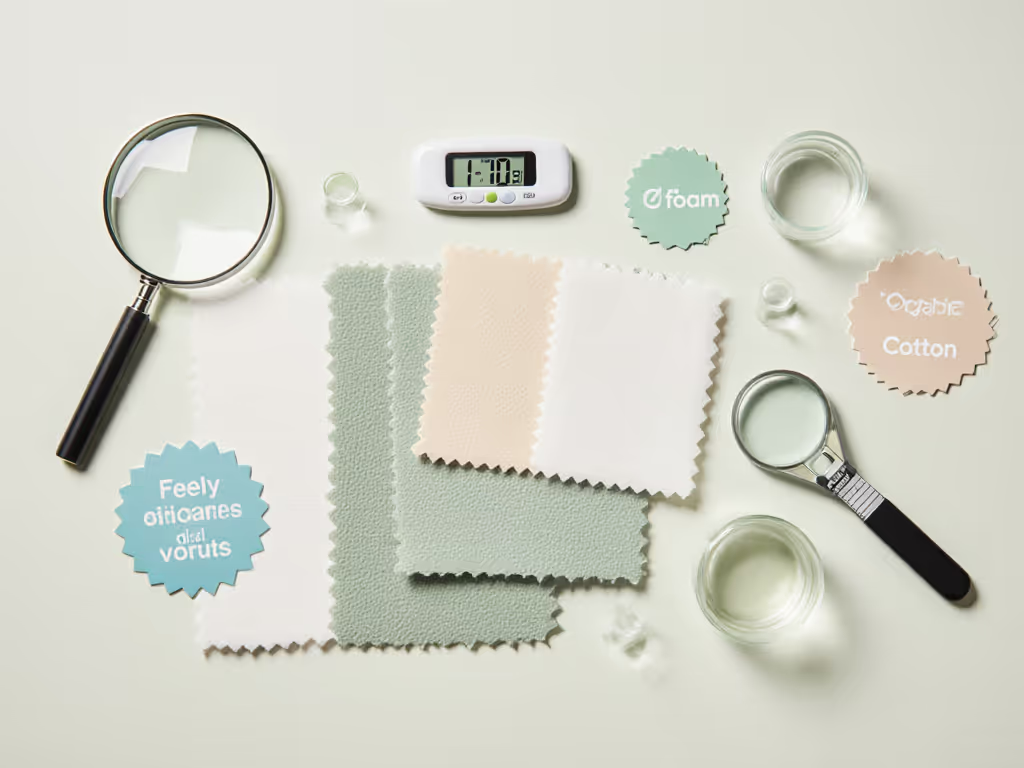
How can I spot truly transparent companies versus greenwashing?
Transparent companies will:
✓ Provide specific test reports (not just "complies with CPSIA") ✓ Name their independent testing laboratories ✓ Disclose exact material composition (not just "non-toxic foam") ✓ Explain manufacturing location and processes
Red flags include: ✗ Vague claims like "eco-friendly" without specifics ✗ No reference to third-party testing ✗ Inability to provide recent test reports ✗ Claims of "100% safe" (no material is risk-free)
After my experience with that persistent "new" smell, I've found companies that share test reports and material details consistently have fewer off-gassing complaints from customers. When one supplier answered every question and shipped a report, the smell test and my headaches quietly disappeared.
What specific questions should I ask before buying a baby play mat?
Don't settle for marketing fluff. Ask:
- "Which specific third-party testing laboratory certified this mat?"
- "Can you share the most recent full test report for chemical compliance?"
- "What is the exact material composition (not just 'EVA foam')?"
- "What are the formamide levels per kg in your current production batch?"
- "How frequently do you conduct new safety testing?"
A reputable company will provide these details promptly. For a step-by-step list of what to verify, see our non-toxic baby play mat safety checklist. As noted in The Young Folk Collective's guidance, "A company should quickly tell you what material and Safety Standard their mats have been tested to. If they are unable to, then this is a red flag."
Are PVC-free baby mats worth the premium?
Historically, PVC (vinyl) play mats contained phthalates as plasticizers, chemicals linked to endocrine disruption. While newer PVC formulations may be phthalate-free, many parents prefer PVC-free baby mats as a precautionary measure.
The trade-offs:
- EVA foam: Typically PVC-free, lower off-gassing potential, but quality varies significantly
- Natural rubber: A truly eco-friendly play mat option but often expensive and may trigger latex allergies
- Cotton/wool: Machine-washable but lacks cushioning; requires additional padding
For most families seeking balanced safety and practicality, high-quality EVA foam from transparent manufacturers offers the best combination of safety, durability, and value.
Final Considerations for Discerning Parents
Choosing a safe play mat requires cutting through marketing claims to assess actual material safety. Prioritize companies that treat transparency as a feature, not an afterthought. Look for specific third-party certifications, demand recent test reports, and be wary of claims that sound too good to be true.
Your best defense is understanding what legitimate safety documentation looks like and recognizing that true safety requires ongoing verification, not just initial compliance. When manufacturers share complete material disclosures and testing protocols, you can make informed decisions about what belongs in your baby's play space.
Transparency is a feature - it's the difference between hoping a product is safe and knowing it is.
Ready to explore which play mats meet rigorous safety standards? Check manufacturer websites for their full testing documentation and compare against the standards we've discussed. Your peace of mind and your baby's safety are worth the extra research.
Related Articles

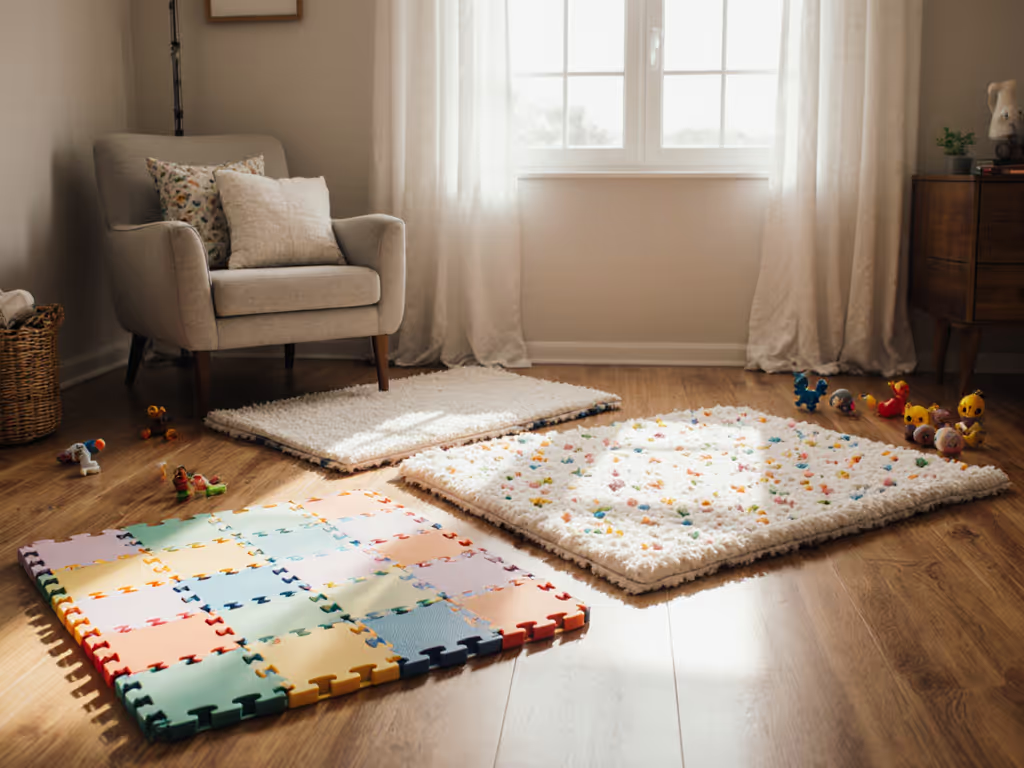
Down Syndrome Play Mats Compared: Lasting Value Guide
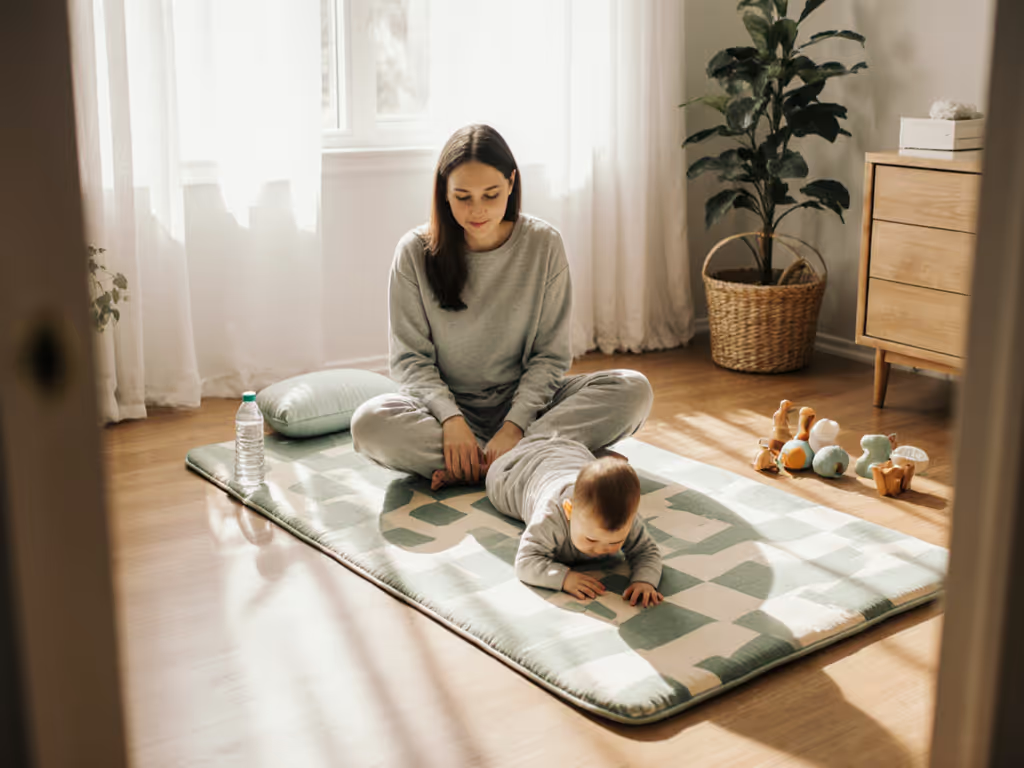
Postpartum Recovery Play Mat: Mom-Friendly Picks
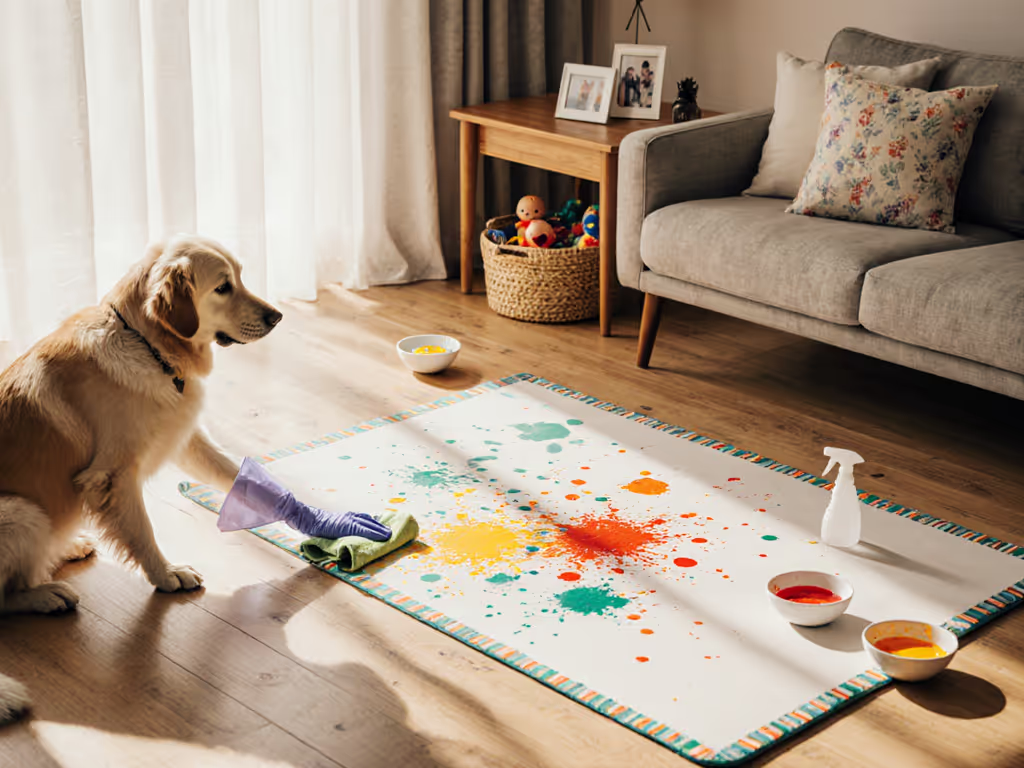
Scrub-Tested Pet-Proof Baby Play Mats
